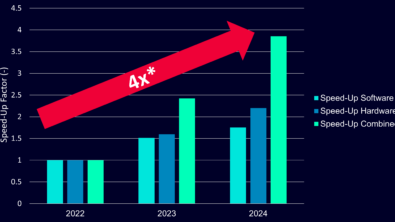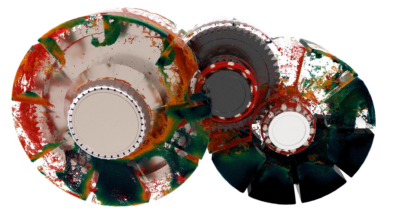NX Nastran Performance Improvements
I have been doing a little performance testing in the latest release of NX Nastran (10.2) which is included in the newest Femap release just announced (version 11.2.1) and I thought I would share a few things that I have learned in the process.
I was particularly interested in new technolgies like GPU processing and also a new style disk drive (PCIe SSD) which we added to my desktop machine. My desktop is a Dell T3600 with dual quad core Xenon processors and 64 GB of RAM. It has a 1TB hybrid drive, a 512GB SSD drive and we just added a new 256GB PCIe SSD drive. My graphics card is an AMD Firepro W9100 with 16GB.
In the general information category, it appears NX Nastran 10.2 is about 10% faster than version 10.0 for standard modal dynamics solutions. I have also been happy with new config file (.rcf) settings that started with NX Nastran 10.0. In case you had not noticed there were some pretty significant changes there to help users take better advantage of machines with more memory. The settings are also designed to keep users from asking for too much resource which leads to performance issues. The new settings look like this:
buffsize=32769
memory=.45*physical
smem=20.0X
buffpool=20.0X
Observations on GPU performance: Using GPU computing can help reduce run time for certain problems. These are modal frequency response runs where many modes are needed. Implementation of GPU computing so far has focused on two modules in Nastran: DCMP and FRRD. The DCMP implementation is not working very well currently as it appears to increase run time which is seen in the time to actually calculate the modes. The FRRD implementation however works very well with a capable graphics card. The good news is that we can turn on only the FRRD part by using the keyword “CL_FRRD=1” on the command line instead of the advertised “gpgpu=any” method.
The elapsed time numbers look like this for NXN 10.2:
No gpu processing 9:06
Gpgpu=any processing 9:59 (all of the increase can be found in the modes calculation)
Cl_frrd=1 processing 6:47
PCIE SSD performance: Adding a new disk drive for Nastran scratch using the PCIE slot is very effective. It is basically plug and play and the performance is effective for all Nastran solutions. The more I/O that Nastran performs, the more it helps. The elapsed time numbers look like this for NX Nastran 10.2:
SATA 9:19
SSD/SATA 9:15
Pcie/SSD 9:06
As with any discussion of performance, your mileage may vary depending on your combination of hardware etc.



